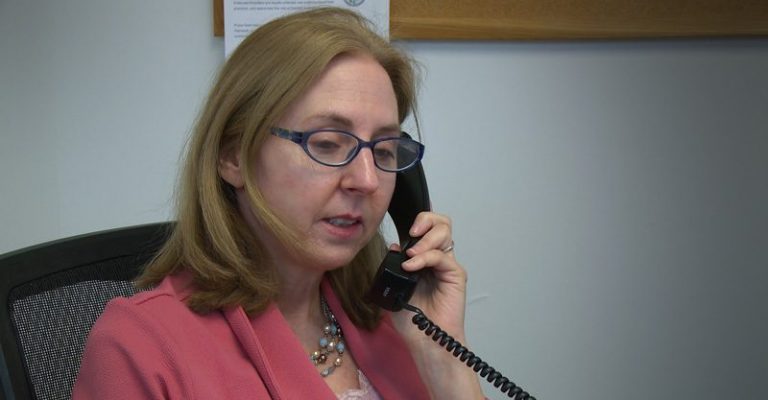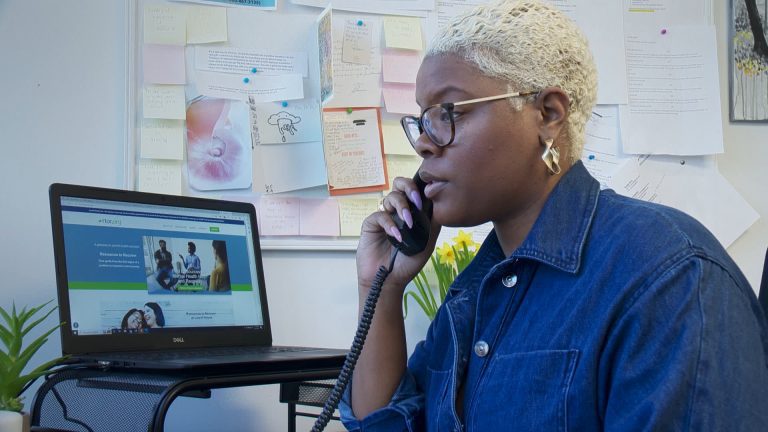I won’t be able to handle it. It’s too risky. Better to be safe than sorry. I had just washed my hands at my sister’s house and was staring at the towel hanging between the sink and the shower. It looked like it might be wet, so I knew someone else had used that towel. What if it was used to dry their whole body and not just their hands? What if I used the same part that touched their butt, and then what if I touched my face and got butt particles on my face? I would feel contaminated and uncomfortable the rest of the night and unable to focus on spending time with my family. I moved away from the hand towel and grabbed some toilet paper to dry my hands instead, just in case. Cue the flood of relief because I was “safe” from the discomfort (and the butt particles). But what if I was safe all along?
The scenario above was about me in my teens. It is representative of the kinds of thoughts many people with anxiety or obsessive-compulsive disorder (OCD) are all too familiar with, often leading to avoidance. Whether they fear public speaking, insects, new foods, contamination, or uncertainty, their distress is perpetuated by the anxiety/avoidance cycle.
So, what is the anxiety/avoidance cycle? Anxiety involves thoughts, feelings, and behaviors (or behavioral urges) experienced in response to a perceived threat. When our brain perceives a threat, it activates our sympathetic nervous system, which means our heart might beat faster, we may breathe faster, our muscles tense up, and we start to sweat. Our body is getting ready to fight, freeze, or flee to keep us safe from the threat. Avoidance is anything we do to get away from the perceived threats and experience relief.
This may sound like a good thing. However, the relief is short-term, and the avoidance actually increases the anxiety over time. The more anxious we get, the more we avoid, and the more we avoid, the more anxious we get. By avoiding the anxiety trigger, we are teaching our brain that avoidance is the only way we can feel relief and be okay. That is great if the trigger is a wild, angry hippo on a rampage. But what if the trigger is a math test? Or worry about a wet towel at our sister’s house? Most folks would agree that you do not need to respond the same way to a wet towel and a rampaging hippo. But sometimes, our bodies react the same way, signaling to our brains that the towel is dangerous and must be avoided. We call this a “false alarm.”
People with anxiety or OCD typically respond to false alarms with avoidance. When students with out-of-control anxiety feel tense and sweaty, with a racing heart, they may go to the nurse instead of taking the test or use toilet paper to dry their hands instead of risking uncertainty about contamination. They feel better in the short term, but their brains have missed a learning opportunity. They have lost a chance to handle the math test or learn that the uncertainty is uncomfortable but not dangerous.
In the long run, their world becomes smaller as their anxiety increases, and they end up believing that they are not capable of many things because those things are “dangerous” or “too hard.” They miss out on valuable experiences—the school trip to the capital because they would be away from their parents, the Hibachi dinner with friends because they are not sure they will like Japanese food, or trying out for a sports team or school play because they may not make the cut.
Mental health treatment can teach people to break the anxiety/avoidance cycle. They can learn flexible responses to their anxious thoughts and feelings through exposure and response prevention and acceptance—to approach rather than avoid. They can learn to tolerate their anxiety and discomfort and break the rules, and disprove the predictions the anxiety or OCD has set.
People can learn that they don’t need to avoid the things that used to seem too scary, too difficult, too risky, or dangerous because the feared outcome either does not happen or, if it does, they can manage it. They can try out for the spring musical, even though there is no guarantee they will get a part (I didn’t, and I survived!). They can go to Hibachi, and even though it isn’t their favorite food, have a great time with friends. They can start with a sleepover at a friend’s house, work their way up to the class trip, and then go off to college. Slowly, their worlds can grow larger.
Slowly, I learned to touch the towel and to sit with the discomfort. I learned that I could enjoy time with my family even if I didn’t know where that towel had been. And slowly, my world grew larger, too.

About the Author: Meredith Tumilty, Psy.D Therapist Meredith Tumilty is a therapist at InStride Health, with a Doctorate in Clinical Psychology from the University of Indianapolis. Meredith has a background in working with children, adolescents, young adults, and their parents in treatment settings ranging from outpatient to residential centers. Meredith is passionate about using evidence-based treatment, supplemented with humor, to help those she works with regain control of their anxiety and/or OCD. She loves to see the pride and accomplishment on the faces of her patients and families when they experience their hard work and bravery paying off. When not working, Meredith loves going on walks with her family and dog, reading, and binge-watching shows.
May Is Mental Health Month 2024
Where to Start: Mental health in a changing world
May is Mental Health Month, a time to spread public awareness and education about mental health conditions and reflect on the impact of mental illness on individuals and their families.
The world is constantly changing – for better or for worse – and it can be overwhelming to deal with everything going on. While society is becoming more comfortable discussing mental health, it can still be hard to know "Where to Start" when it comes to taking care of your own well-being.
This month, we will feature blog posts and information to help you or a loved one get started on the path to mental wellbeing.
Mental Health Month is also a time to recognize and commit to changing the racial and economic inequities in our healthcare system, especially in the treatment of mental health conditions.
www.rtor.org and its sponsor Laurel House are committed to advancing racial equity and social justice and making mental health services accessible to all.
Photo by Karolina Grabowska: https://www.pexels.com/photo/wooden-hanger-with-towels-and-basket-with-bathroom-products-4210315/
The opinions and views expressed in any guest blog post do not necessarily reflect those of www.rtor.org or its sponsor, Laurel House, Inc. The author and www.rtor.org have no affiliations with any products or services mentioned in the article or linked to therein. Guest Authors may have affiliations to products mentioned or linked to in their author bios.
Recommended for You
- How to Protect Your Mental Health During the Holidays with a Gentle Reset - December 17, 2025
- Crisis Transport for Teens: A Compassionate Bridge to Mental Health Care - December 15, 2025
- Why a Mental Health Retreat Can Transform Your Recovery Journey - December 11, 2025







